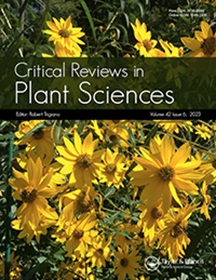Progress and future impacts on genomic dissection of soybean domestication and improvement
IF 4.9
2区 生物学
Q1 PLANT SCIENCES
引用次数: 0
Abstract
AbstractSoybean (Glycine max [L.] Merr.) was domesticated from the wild annual progenitor Glycine soja (Sieb. & Zucc.) in the temperate zone of China. Through domestication and improvement, soybean agronomic traits and adaptability have been significantly altered. In this review, we discuss the ways in which genetic changes were selected in soybean to enable adaptation to diverse environmental conditions. Challenges and strategies are discussed for breeding new elite varieties from existing elite varieties. Finally, we propose a strategy to break the current genetic bottleneck in soybean breeding: de novo domestication, which utilizes the excellent genetic resources available in wild soybean and provides a feasible strategy for accelerating the soybean improvement process. Overall, this review serves as a guide to understand the genetic factors that have driven soybean domestication and improvement over thousands of years, promoting future generation of soybean cultivars that are optimized for high yield under stressful environmental conditions.Keywords: Soybeandomesticationimprovementde novo domestication AcknowledgementsWe thank Prof. Tianfu Han (Institute of Crop Sciences, Chinese Academy of Agriculture Sciences) for his insightful suggestions, and the language expert for providing the revision of English writing. We also thank the funding support of China Agriculture Research System (CARS-04) and the Innovation Program of Chinese Academy of Agricultural Sciences.大豆驯化改良基因组解剖研究进展及未来影响
大豆(Glycine max) [L];[Merr.])是从野生的一年生祖先甘氨酸大豆(Sieb.)驯化而来。& Zucc.)产于中国温带。经过驯化和改良,大豆的农艺性状和适应性发生了显著变化。在这篇综述中,我们讨论了大豆选择遗传变化以适应不同环境条件的方法。讨论了从现有优良品种中选育新的优良品种所面临的挑战和对策。最后,我们提出了突破当前大豆育种遗传瓶颈的策略:重新驯化,利用野生大豆的优良遗传资源,为加快大豆改良进程提供了可行的策略。综上所述,本综述有助于了解数千年来驱动大豆驯化和改良的遗传因素,促进在逆境条件下优化高产大豆品种的产生。感谢中国农业科学院作物科学研究所韩天福教授提出的有见地的建议,感谢语言专家对英文写作的修改。我们也感谢中国农业研究系统(CARS-04)和中国农业科学院创新计划的资助。
本文章由计算机程序翻译,如有差异,请以英文原文为准。
求助全文
约1分钟内获得全文
求助全文
来源期刊
CiteScore
12.90
自引率
1.40%
发文量
15
审稿时长
>12 weeks
期刊介绍:
Critical Reviews in Plant Sciences focuses on presenting in-depth and up-to-date reviews of timely and/or cutting-edge subjects in the broad discipline of plant science, ranging from molecular biology/biochemistry through the areas of cell biology, plant pathology and physiology, genetics, classical botany, and ecology, to practical agricultural applications. Articles in the journal provide an up-to-date literature base for researchers and students, pointing the way towards future research needs. The journal is also a significant source of credible, objective information to aid decision makers at all levels.

 求助内容:
求助内容: 应助结果提醒方式:
应助结果提醒方式:


